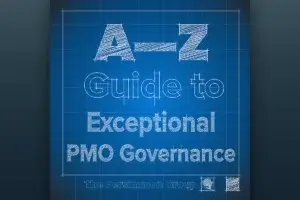The evidence is clear: A dominant driver of project success is an actively engaged executive project sponsor. But for many of us, that isn’t good news.
Few executives are trained and prepared to fill the role of a Sponsor. Even fewer have the time, resources, and energy to juggle project sponsorship with their “day job.”
Consider this short list of what a great sponsor does:
- Context. Provide business context and insight to the project team.
- Advocacy. Champion the project to other executives and leaders.
- Resources. Ensure availability of resources, funding, and “time to do it right.”
- Momentum. Resolve issues or sticking points outside the PM’s authority.
When a Project Manager and a Sponsor can forge a genuine partnership, almost everything becomes easier. So what should you do if you are stuck with a disengaged or otherwise ineffectual leader?
It depends. Any good cure relies on an accurate diagnosis.
Common Problems That Could Be Plaguing Your Sponsor Relationship
- The Issue: Your sponsor doesn’t understand their role.
The Cure: Communicate exactly what you need.
In most cases, executives simply don’t understand (or have never been taught) what a good sponsor does. You need to fill in their knowledge… without resorting to a 50-slide PowerPoint presentation.
To achieve this, ask for what you need specifically, explicitly, and consistently. For example, in your next regular meeting, you could say something like: “Lately, I’ve been noticing that we’ve got a lot of tasks stalled in the accounting department. Any chance you could meet with the CFO and find out what’s competing with us for priority?”
Over time, your sponsor will come to understand their role through practice. Meanwhile, you’ll get powerful tactical support where you most need it.
- The Issue: Your sponsor has more important /urgent priorities.
The Cure: Keep your relationship low maintenance.
Sure, you could try to persuade your sponsor that your project is more critical than it seems. But sometimes, it just isn’t. You can still get what you need when your project is of low importance. You just have to get better at asking for it.
First, find out how and when your sponsor best absorbs information. Choose that time and format to provide a BRIEF (2-3 sentence) summary of your situation and 1-2 specific actions you need them to take. If a significant risk is looming, mention that too… but don’t overcomplicate the message.
Focus on providing context (the targeted information needed to make responsible decisions) rather than background (everything else). Otherwise, your project is likely to get buried under the pile of your sponsor’s other priorities.
- The Issue: Your sponsor doesn’t believe they can affect positive change.
The Cure: Consider finding a “shadow sponsor.”
Burnout is real, and executives aren’t immune. If your sponsor has fallen prey to a defeatist attitude, your first tactic should be re-energizing their spirit by achieving and highlighting quick wins. It’s possible that proving momentum could help jolt them out of complacency.
But if that doesn’t work, you may need to find someone (or more than one person) who can unofficially fill some of the sponsor’s roles. For example, you may be able to build a relationship with another leader who would be happy to advocate your project to their peers or share valuable information.
Too often, project managers assume they’re “stuck” with the sponsor they have. That may be true…on paper. But think outside the box, and you may be able to turn the ship around.
- The Issue: Your sponsor doesn’t trust you (yet).
The Cure: Increase contact.
Relationships aren’t built over email. You’ll need to do the work to develop trust, rapport, and access. If your project is critical, aim to see and speak to your sponsor daily. At a minimum, ensure you’re touching base twice a week (in person or on camera.)
When together, be conscious of the balance between respecting their time (i.e., getting to the point) and building the relationship (i.e., establishing rapport, sharing a joke, or brainstorming ideas). You need to do both to build trust.
Finally, don’t shoot yourself in the foot by withholding bad news, expressing frustration about your sponsor to others, or anything else that erodes the trust you’re working hard to develop.
Navigating the (sometimes treacherous) waters of executive project sponsorship can be daunting, even for the most seasoned project manager. Yet, the solutions are often more straightforward than we believe: clear communication, targeted information, strategic networking, and dedicated relationship-building.
Remember, great project managers not only manage their projects, but they also manage their sponsors. Armed with the right approach and a little bit of patience, you can transform a disengaged sponsor into your project’s biggest advocate—the power to take your project from good to great lies in your hands.










